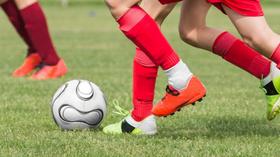Top Rankings
Lower Dauphin School District ranks among the top 20% of public school district in Pennsylvania for:
Category
Attribute
Math Proficiency
Highest math proficiency (Top 20%)
Graduation Rate
Highest graduation rate (Top 20%)
Community Size
Largest student body (number of students) (Top 1%)
For the 2025-26 school year, there are 8 public schools serving 3,432 students in Lower Dauphin School District. This district's average testing ranking is 8/10, which is in the top 30% of public schools in Pennsylvania.
Public Schools in Lower Dauphin School District have an average math proficiency score of 48% (versus the Pennsylvania public school average of 38%), and reading proficiency score of 62% (versus the 55% statewide average).
Minority enrollment is 19% of the student body (majority Hispanic), which is less than the Pennsylvania public school average of 39% (majority Hispanic and Black).
Overview
This School District
This State (PA)
# Schools
8 Schools
2,928 Schools
# Students
3,432 Students
1,668,648 Students
# Teachers
269 Teachers
124,158 Teachers
Student-Teacher Ratio
13:1
13:1
Student By Grade
District Rank
Lower Dauphin School District, which is ranked within the top 30% of all 678 school districts in Pennsylvania (based off of combined math and reading proficiency testing data) for the 2022-2023 school year.
The school district's graduation rate of 94% has decreased from 95% over five school years.
Overall District Rank
#165 out of 685 school districts
(Top 30%)
(Top 30%)
Math Test Scores (% Proficient)
48%
38%
Reading/Language Arts Test Scores (% Proficient)
62%
55%
Science Test Scores (% Proficient)
65%
57%
Graduation Rate
94%
87%
Students by Ethnicity:
Diversity Score
0.34
0.59
% American Indian
n/a
n/a
% Asian
3%
5%
% Hispanic
9%
15%
% Black
2%
14%
% White
81%
61%
% Hawaiian
n/a
n/a
% Two or more races
5%
5%
All Ethnic Groups
District Revenue and Spending
The revenue/student of $19,005 in this school district is less than the state median of $23,696. The school district revenue/student has stayed relatively flat over four school years.
The school district's spending/student of $18,560 is less than the state median of $23,119. The school district spending/student has stayed relatively flat over four school years.
Total Revenue
$65 MM
$39,541 MM
Spending
$64 MM
$38,578 MM
Revenue / Student
$19,005
$23,696
Spending / Student
$18,560
$23,119
Best Lower Dauphin School District Public Schools (2025-26)
School
(Math and Reading Proficiency)
(Math and Reading Proficiency)
Location
Quick Facts
Rank: #11.
South Hanover Elementary School
(Math: 60-64% | Reading: 70-74%)
Rank:
Rank:
9/
Top 20%10
15 W 3rd St
Hershey, PA 17033
(717) 566-2564
Hershey, PA 17033
(717) 566-2564
Gr: K-5 | 372 students Student-teacher ratio: 14:1 Minority enrollment: 20%
Rank: #22.
Conewago Elementary School
(Math: 75-79% | Reading: 60-64%)
Rank:
Rank:
9/
Top 20%10
2809 Hershey Rd
Elizabethtown, PA 17022
(717) 367-7233
Elizabethtown, PA 17022
(717) 367-7233
Gr: K-5 | 230 students Student-teacher ratio: 14:1 Minority enrollment: 13%
Rank: #33.
Lower Dauphin High School
(Math: 55% | Reading: 69%)
Rank:
Rank:
8/
Top 30%10
201 S Hanover St
Hummelstown, PA 17036
(717) 566-5330
Hummelstown, PA 17036
(717) 566-5330
Gr: 9-12 | 1,088 student Student-teacher ratio: 13:1 Minority enrollment: 19%
Rank: #44.
Nye Elementary School
(Math: 50-54% | Reading: 60-64%)
Rank:
Rank:
7/
Top 50%10
200 S John St
Hummelstown, PA 17036
(717) 566-0300
Hummelstown, PA 17036
(717) 566-0300
Gr: K-5 | 316 students Student-teacher ratio: 13:1 Minority enrollment: 24%
Rank: #55.
Londonderry Elementary School
(Math: 50-54% | Reading: 55-59%)
Rank:
Rank:
7/
Top 50%10
260 Schoolhouse Rd
Middletown, PA 17057
(717) 944-9462
Middletown, PA 17057
(717) 944-9462
Gr: K-5 | 242 students Student-teacher ratio: 11:1 Minority enrollment: 16%
Rank: #66.
East Hanover Elementary School
(Math: 45-49% | Reading: 55-59%)
Rank:
Rank:
6/
Top 50%10
2673 Sand Beach Rd
Grantville, PA 17028
(717) 469-2686
Grantville, PA 17028
(717) 469-2686
Gr: K-5 | 329 students Student-teacher ratio: 12:1 Minority enrollment: 21%
Rank: #77.
Lower Dauphin Middle School
(Math: 39% | Reading: 59%)
Rank:
Rank:
6/
Top 50%10
251 Quarry Rd
Hummelstown, PA 17036
(717) 566-5310
Hummelstown, PA 17036
(717) 566-5310
Gr: 6-8 | 841 students Student-teacher ratio: 13:1 Minority enrollment: 18%
Rank: #88.
Price
(Math: <50% | Reading: <50%)
Rank:
Rank:
5/
Bottom 50%10
101 East High Street
Hummelstown, PA 17036
(717) 566-5325
Hummelstown, PA 17036
(717) 566-5325
Gr: 6-12 | 14 students Student-teacher ratio: 7:1 Minority enrollment: 21%
Frequently Asked Questions
How many schools belong to Lower Dauphin School District?
Lower Dauphin School District manages 8 public schools serving 3,432 students.
What is the rank of Lower Dauphin School District?
Lower Dauphin School District is ranked #174 out of 678 school districts in Pennsylvania (top 30%) based off of combined math and reading proficiency testing data for the 2022-2023 school year. This district ranks in the top 20% of Pennsylvania school districts for: Highest math proficiency (Top 20%), Highest graduation rate (Top 20%) and Largest student body (number of students) (Top 1%)
What is the racial composition of students in Lower Dauphin School District?
81% of Lower Dauphin School District students are White, 9% of students are Hispanic, 5% of students are Two or more races, 3% of students are Asian, and 2% of students are Black.
What is the student/teacher ratio of Lower Dauphin School District?
Lower Dauphin School District has a student/teacher ratio of 13:1, which is lower than the Pennsylvania state average of 14:1.
What is Lower Dauphin School District's spending/student ratio?
The school district's spending/student of $18,560 is less than the state median of $23,119. The school district spending/student has stayed relatively flat over four school years.
Recent Articles

2025 Classroom Size Trends: Are Classes Still Growing?
A 2025 update on U.S. classroom sizes, policy battles, student outcomes, and whether class sizes continue to expand.

Personalized Learning in 2025: Revolutionizing Education
Explore how personalized learning is reshaping education in 2025—insights, policy, impact, and real-world models for students, parents, and educators.

How Bullying Impacts Student Academic Performance in 2025
Explore how bullying harms student achievement, attendance, and well-being — and strategies schools use in 2025 to mitigate its effects.





